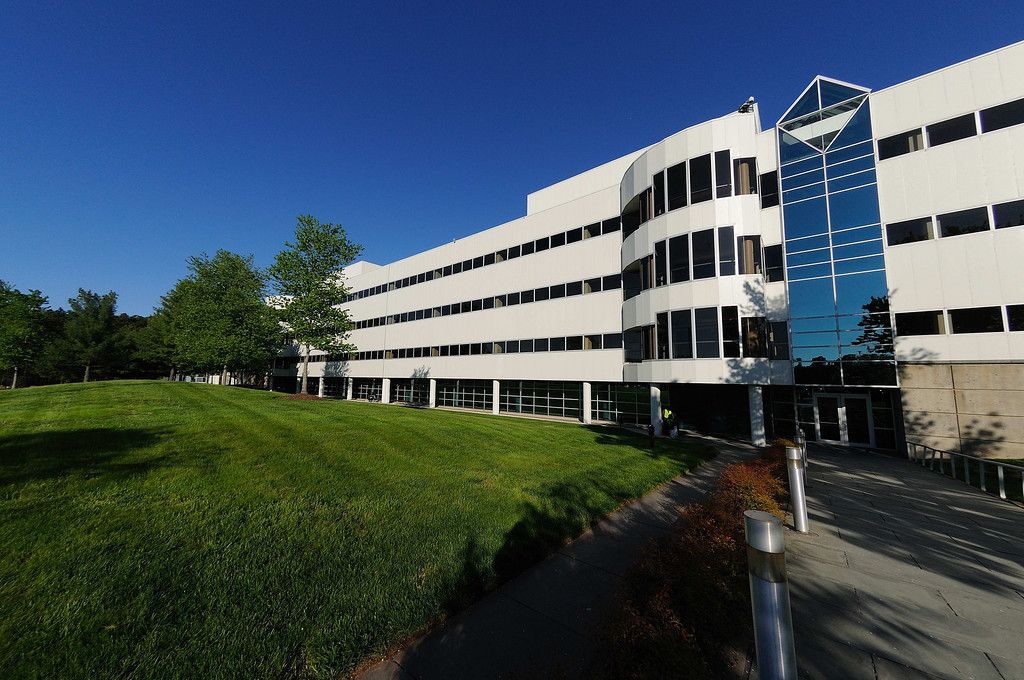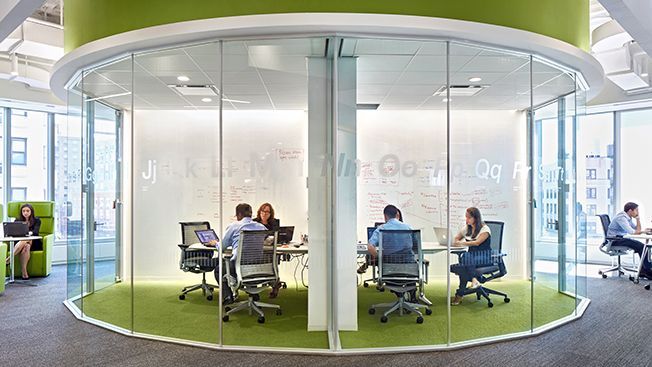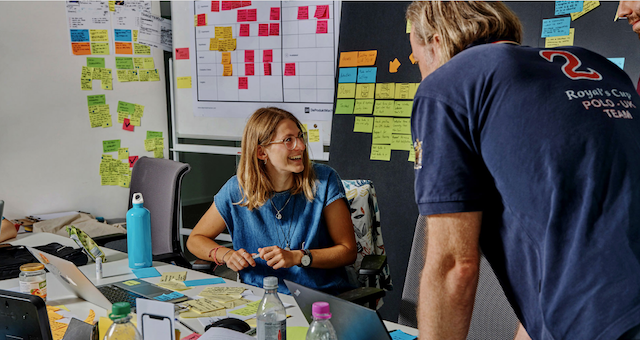Lee Duncan takes us through a career that spans 21 years at IBM

“People will question you. They'll even ridicule you, or they'll challenge you. They'll tell you all the reasons why it can't work, but to really put your mark on this world, you need to do something that hasn't been done.”
This series profiles the most important part of Uizard, our community. Today’s featured interview is with Lee Duncan, Design Practice Leader at IBM Garage.
So Lee, for all the Uizards out there, who are you? What do you do? And what are your interests?
Lee Duncan:
I've been working at IBM for a really long time, but I'm much more than just a designer at IBM. I have a lot of interests, tons of interests, and anyone that is part of my Facebook page knows that I do a lot of experimentation in regards to biological hacking. I do a lot of things with sleep because I believe that I'm able to do my best work when I've slept well. So I collect data every night, and every morning I process that data to see how I can sleep better. And I basically review all the things I did the day before to see how that contributed to the quality of my sleep. So that's one thing.
I raced bikes for over 20 years. Just to give you a feeling of how focused and intense I was in cycling, the last year I raced bikes I had a resting pulse of 31 and the average human has a resting pulse between 67 and 74.
I use data. I use disruptive innovation and transformation in everything I do, from sleep to cycling and also with investing. I do a lot of investing, and I'm really interested in disruptive technology. And again, I use data with design. I'm one of the few people within IBM that is a design sprinter. I'm an enterprise design thinker. I'm a design thinking coach, which is a big deal at IBM, and I'm proud of that, but I'm also a design sprinter. I’m also an agilist, and I also have an MBA. So I have a business background, and I think it's really important, especially for designers, to be able to speak the language of business.
How has an MBA benefited you as a designer?
LD: I think having an MBA is really important because you need to understand what are some of the forces that drive business, and to be able to appreciate the metrics that support a high-performing company. When you go for a business degree, it's very common to do case projects and understand how some companies have benefited and how some have failed, and what's been involved with that. What is the culture? What are some of the soft skills involved? I know a lot of designers struggle with soft skills. They think if they can push pretty pixels around, that is enough, or that the work speaks for itself, but it does not.
An MBA teaches you how to work in projects, how to understand what drives business, what drives strategy specifically, and then you're able to position yourself for a seat at the table. Otherwise, you're sitting at another table that is not in the room with the leadership. And if you want to be able to influence people and elevate the job and role of design so it's leading business, as opposed to the other way around, you need an MBA, because you need to show business leaders that you understand what's driving the direction of the company. It will resonate with them. Being able to be influential is a huge skill, and communication skills and leadership skills are really important, and it was able to refine that for me.
You’ve been at IBM for 17 years! Where did you start?
LD: So I have 17 years available on my LinkedIn, but if we were to peel back the onion, you would find out I've actually been at IBM for 21 years. I came to IBM back in 1999, and I started off in the supply chain space, I got hired to man the supply chain and to manage a number of suppliers that provided electronic components to IBM. I did that for a while, and I actually owned the total consumption for IBM of numerous components like capacitors, resistors, etc.
How did you get into Supply Chain?
LD: I got my MBA at Clarkson up in Northern New York. That got me into GE. I worked for GE for one year and then went to IBM. Having an MBA that was closely tied with engineering and IBM’s affiliation with Clarkson helped me. Clarkson is one of the leading schools in the United States for supply chain specifically. So that worked quite well and then a few years later, I got an opportunity to go to China.

That sounds like an amazing opportunity, how was your experience of China?
LD: That year, I was one of the youngest international assignees for IBM. And IBM was big at that time. It was amazing. I had just gotten married to my wife, who maybe didn't think it was so amazing at the time, but she married me anyway!
We lived in Hong Kong and commuted to mainland China every single day, which was about two to three hours. I was the China commercial lead for electronic components, and I also was involved with handling escalations with large companies like Foxconn.
I did that for a few years and traveled all around Asia. And then when my term was done after two years, I had the chance to go back to where I first started, which actually was in Poughkeepsie in Northern New York, or I could go to North Carolina. The site in North Carolina is called Research Triangle Park, and it's the largest research park in the United States. And I said, well, I'm going to go to North Carolina because I think there'll be more opportunities. I like to learn, and I want to be able to pivot.

What was the first opportunity at Research Triangle Park?
LD: I had an opportunity to be a team lead for retail sales solutions. It's the big checkouts that were in grocery stores at that time. I helped with the relationship with our suppliers, and I led a small team and that was very, very intense and difficult. I had a much more flexible calendar when I was in Hong Kong strangely because I was always on the move. I could control my meetings, but I found when I came back to the United States, I was doing a lot of meetings back to back and it wasn't quite as exciting as traveling around Hong Kong and Asia. It was good, it was intense, but I had enough of that after a couple of years. So then I started seeing some opportunities to be a little more creative. So I got a role in communications writing — being a writer for awards and writing speeches — for our chief procurement officer at that time.
Writing for awards and speeches? That is some pivot, how was that experience?
LD: I won some awards that IBM had tried to win and had not had the chance to win, and I was able to win those by spending a lot of time going over my writing and really getting mental on it. I was doing deep work before deep work was a thing. I was designing copy.
What was it that appealed to you about having a design aspect in your role?
LD: I always felt that my creativity was my strength. And to kind of borrow the aspects or some of the viewpoints of Ryan Holiday, he usually says — focus on doing what no one else can do, make that your thing. Really double and triple down on the thing that you can do that no one else can do, and usually it has to align with your passion. To be good enough, it has to align with your passion. To do 10,000 hours and to get up every morning and to be obsessed with it and thinking about it in the shower, you have to be obsessed with it.
So I found that being creative, doing creative works, writing and designing things either visually or designing a product, being empathetic, understanding users was my thing. I could do that repeatedly and I was passionate.

You have been in a variety of different roles. It sounds like creativity is a required aspect now.
LD: Absolutely. In the beginning, when I worked at IBM, I was just trying to make a way for myself, get a career, be successful, gain entry into the company, gain acceptance into the organization. That was my goal, but just like in the Maslow hierarchy of needs, there essentially is a different hierarchy of needs as you've been in the company for a while. And my new elevated needs were to be expressive and to be creative and to start doing things that I thought had meaning and impact that was different as opposed to just survival and progression.
I can do this for a living? People valued this work and it could be a differentiator for how I was successful in the company. My eyes were open to the world of possibilities, and it felt good. I was getting validation so I knew that was going to be my direction.
Where did this thirst for creativity lead you?
LD: We had some roles at IBM, which were in an area called Model Office. It's basically how do you create the best way to work? So I got the opportunity to start disrupting how work was done. I went into a number of different areas of the business like mergers and acquisitions, security services. I started getting into all different spaces and transformations because I would go in and question everything and say, "Clean sheet. Blue Sky. What are the metrics? What do we want to accomplish?” I just started asking questions. I was not afraid to not know the answer. I walked into that space and just started creating a new reality and that worked. Then they said, "Okay, do this in some other places," and I expanded the Model Office into a number of different realms.

How did you eventually fall into product design?
LD: I got lucky. At that time, IBM started doing design thinking. We were doing design thinking, but really, accelerating design thinking. I was able to get trained, go through a bootcamp at our flagship design studio in Austin, Texas. Justin Gilbert, who is a great friend of mine, is a design leader and an engineering black belt type of person. He was able to get me entry at that event. When I went through that bootcamp and started learning about design thinking, I was absolutely at home. I love the people. I love the personalities, the carefree, fun folks that were at the studio. I was like, "I cannot believe they pay people to do this for a living." I was absolutely blown away. It was amazing. It was everything, I knew that's what I wanted to do.
Sounds like creativity without restrictions.
LD: Absolutely. It was "choose your adventure, and there are multiple ways to get there." It was more visual than I'd ever experienced before. These were artists. Especially on that day, we hired a lot of artists, very creative folks, extremely creative, very good design backgrounds, classical design. They were just fun, fun to be around, not at all protected, totally transparent, and would tell you the truth when you asked them. They're not positioning, they're not posturing in any way. It's just an amazing group of people. I knew I found my people when I was with them. Then I started getting skilled up on the design practice, and I brought it back to IBM. I was all excited. I came back from Austin. I was ready to go. Everything I did, I want to insert some type of design thinking and certainly asking the right questions, and doing design research.
And this led you to design sprints?
LD: I started reading about Jake Knapp and what's going on at Google and how these things that would usually take me a long time, they could do in five days! I said, "That is not possible, not with an enterprise," but I couldn't look away because it was happening at Google, it was happening at Google Ventures. They were able to do it for these big complex problems.
I brought that back to IBM, and we decided we want to be agnostic in regards to how we solve problems, not regular design thinking, but we could also couple it with whatever was needed, whatever the tool was required. We created a design agency specifically for this. I lobbied for this design agency, and it's one of the very few internal design agencies for IBM.
We do consulting services inside IBM, and we run design sprints. I teach a lot of design sprints, and I have scaled design sprints along with my enterprise design thinking. We want to be more external with our design thinking, we've done a lot of transformation inside IBM, but we also want to make sure that we are solving problems for the outside world, so we are tripling down on IBM Garage.
What is IBM Garage?
LD: That's where we essentially do a design sprint, but we bring in engineers to actually make the thing. We not only ideate and produce high-fidelity prototypes, but we bring in subject-matter experts and engineers to actually produce that thing, and then our clients leave with a tested product that is ready for market, has product-market fit, essentially, when they're done.
It takes three to six months but it brings in all the skills, all of the talents that IBM can offer, and does everything for the client.

A lot of our users are dreamers and entrepreneurs. They're coming to our platform because they want to solve a problem or create the next big thing. As someone who lives and breathes innovation on a daily basis, what advice would you give them?
LD: My advice for them is to keep dreaming. The quote from Steve Jobs is, "Those that are crazy enough to think that they can change the world are the ones that often do." And at first, people will question you, they'll even ridicule you, or they'll challenge you. They'll tell you all the reasons why it can't work. And there are some cases where it can. But to really put your mark on this world, you need to do something that hasn't been done, and the reason why it hasn't been done is that people thought it couldn't be done. So trust yourself, trust yourself. Now granted, apply some logic and reality to it, but you want to break through what has been done before and rethink things.
So dream big, be courageous, make yourself uncomfortable, be aspirational, inspire yourself, challenge yourself every day. But certainly do things that haven't been done because you need to really put yourself into a corner many times to come up with something that's different. Trust your feelings, trust your gut, but dream big
